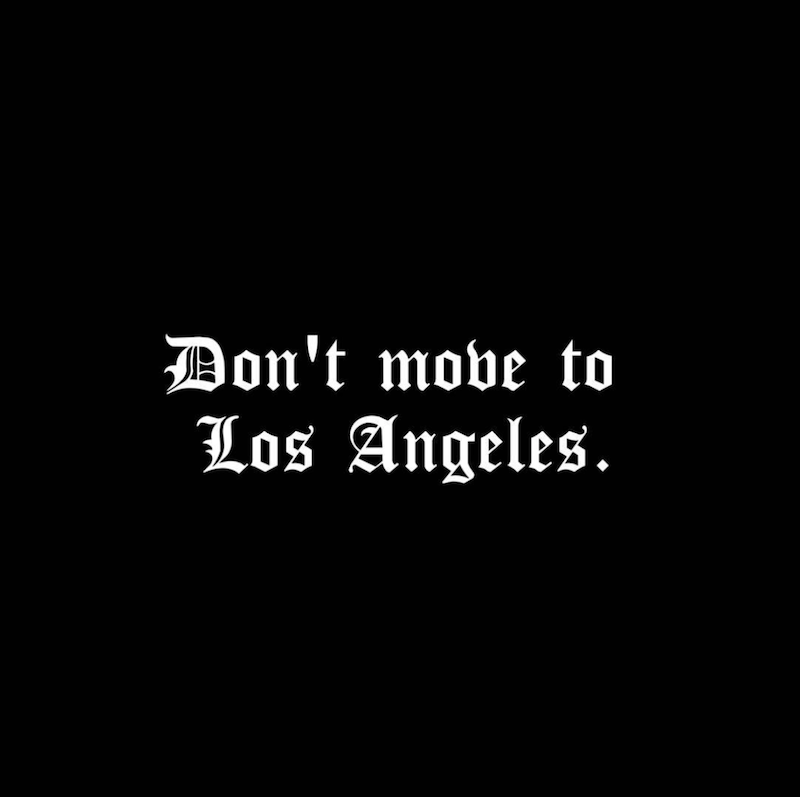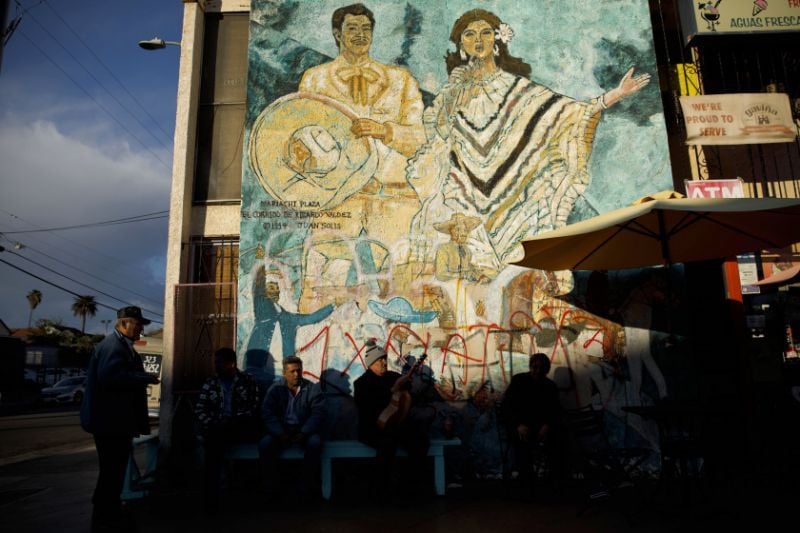
As a nice coda to yesterday’s post on gentrification in Los Angeles, the adroit Ann Friedman tells us how not to ruin her adopted city.
I like to think I’m one of the good transplants. (Don’t we all?) I came to California seven years ago when most New Yorkers were still turning up their noses at this city. I had a local job — not a work-remote situation. I befriended my neighbors. I patronized burrito joints that were not endorsed by Anthony Bourdain. I got a public library card. I learned the bus routes near my house. I made sure to vote in local elections.
Image via Rafa Esparza, who asks “What can citizenship outside of colonization and more in tune with cultural stewardship look like?”
This is the question for L.A.’s economically privileged new arrivals: How do you help care for the city that drew you in, rather than allow your presence to steamroll its culture?
Also insert “New York” and “San Francisco,” above.

My former colleagues Andrew Romano and Garance Franke-Ruta took a look at recent protests led by Defend Boyle Heights and the larger radical anti-gentrification movement they’ve inspired. Coffee shops are being targeted and galleries shutting down from harassment on the east side of Los Angeles.
Gentrification isn’t new, nor is anti-gentrification activism. So why are these groups taking to the street now?
Millennials are, simply put, “facing the scariest financial future of any generation since the Great Depression,” as HuffPost’s Michael Hobbes recently put it. They’ve taken on at least 300 percent more student debt than their parents did. They’re about half as likely to own a home as young adults were in 1975. One in five is living in poverty. Based on current trends, many of them won’t be able to retire until they’re 75. Jobs have become gigs; college is exorbitant, starting salaries are paltry the social safety net is shredded.
And all of these trends are especially acute among the poorer, nonwhite millennials who tend to live in major cities. Between 1979 and 2014, for instance, the poverty rate among young high school-only graduates more than tripled, to 22 percent, and roughly 70 percent of black families and 71 percent of Latino families don’t have enough money saved to cover three months of living expenses.







Stay Connected